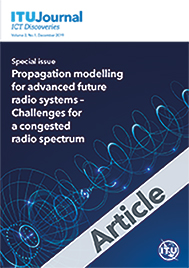 | Satellite communications have already started to employ mmWave bands such as the Ka-band (20/30GHz) for broadcasting and broadband services; Ka-band is used either for backhauling (feeder links) or direct-to-user services. To enhance the propagation modelling and assist in the development of advanced satellite radio systems, two site diversity experiments are simultaneously conducted in Greece and in the UK using the satellite beacon transmitted by ALPHASAT. In this paper, the two years of collected experimental data are presented and evaluated in terms of first-order statistics. Considering the different climate of the two experiment locations, one in the Southern Mediterranean Sea (Greece) and one in the Northern Atlantic Sea (UK), a comparison between the two respective Ka-band long-term radio diversity channels is also performed. Several conclusions for the diversity system design are drawn that can be particularly significant towards the application of a smart gateway diversity concept in feeder links. |
|